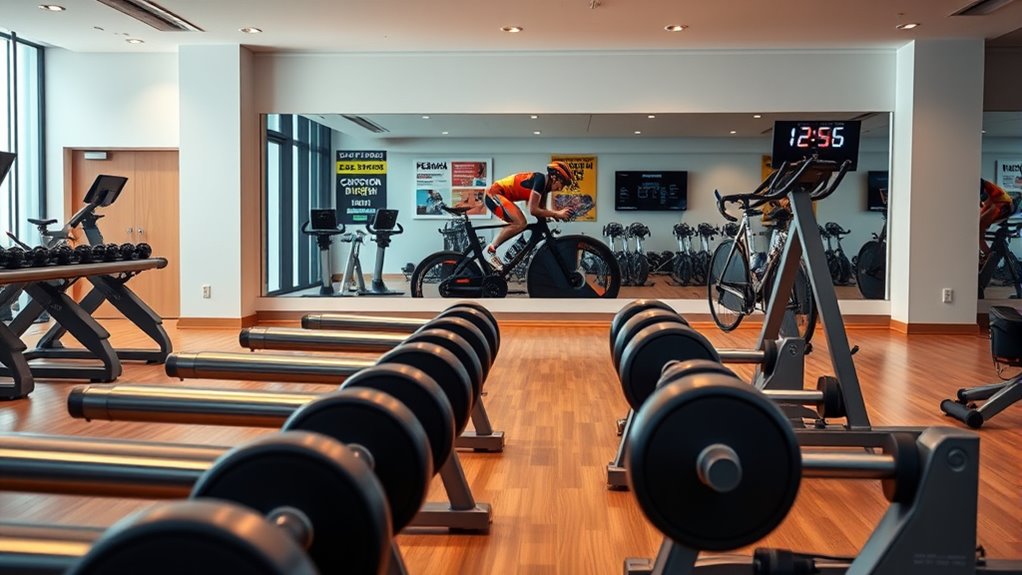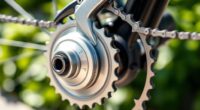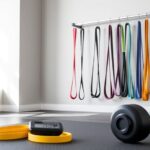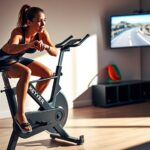Off-season indoor periodization helps you maintain progress and prevent burnout by adjusting training intensity and incorporating proper recovery strategies. You’ll vary workouts, focusing on technique, strength, and weaknesses while avoiding constant high-pressure sessions. Rest, active recovery, and good nutrition support muscle repair and energy. This approach builds a solid base for future success and keeps training enjoyable. Keep exploring to discover how to maximize your off-season efforts even further.
Key Takeaways
- Vary training intensity and volume to prevent burnout and promote continuous progress during the indoor off-season.
- Incorporate active recovery and lighter sessions to enhance muscle repair and reduce fatigue.
- Focus on technique improvement and addressing weaknesses through structured, purpose-driven workouts.
- Use periodization strategies that gradually increase and then taper training loads for optimal adaptation.
- Prioritize recovery, nutrition, and hydration to support health, injury prevention, and sustained motivation.
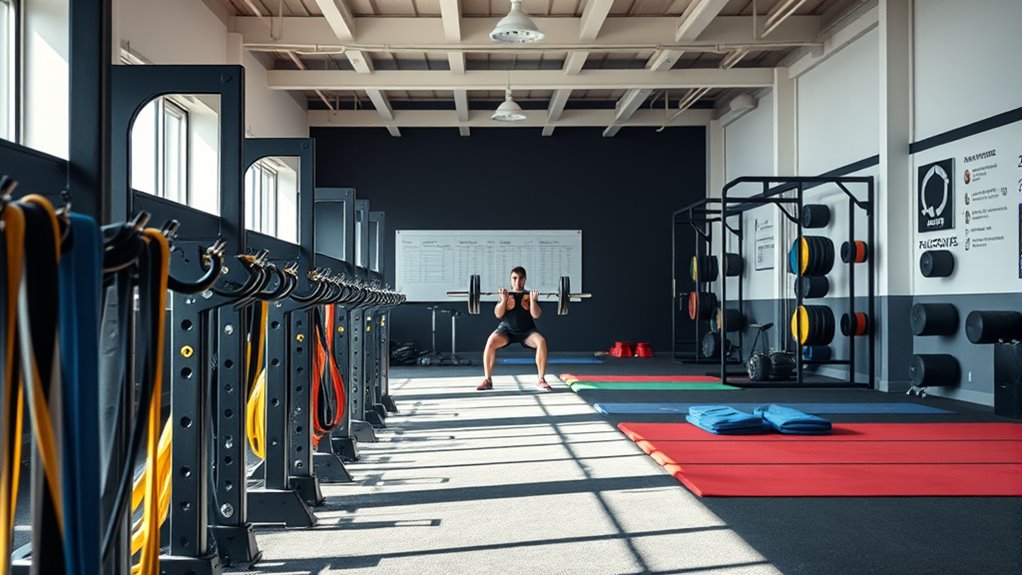
During the off-season, indoor periodization provides a strategic way to maintain progress and prevent burnout. This approach involves carefully adjusting your training intensity to avoid overtraining while still making gains. Instead of pushing yourself to the max every session, you focus on varying the intensity levels throughout your training cycle. This helps you recover better and keeps your motivation high. You might incorporate lighter sessions or active recovery days between more intense workouts, giving your body the chance to repair and adapt. By managing training intensity thoughtfully, you avoid the fatigue that often comes with constant high-pressure training, guaranteeing you stay fresh and ready for the next phase of your training plan.
Indoor off-season periodization helps prevent burnout by varying training intensity and incorporating recovery for sustained progress.
Recovery strategies are essential during this period. They include not only rest days but also techniques like stretching, foam rolling, massage, and proper sleep. These strategies help your muscles recover faster, reduce soreness, and improve overall performance. You should pay attention to your body’s signals—if you feel overly fatigued or notice persistent soreness, it’s a sign to prioritize recovery. Incorporating active recovery sessions, such as light cardio or mobility work, keeps blood flowing without adding stress, aiding in quicker recovery. Nutrition also plays a significant role; fueling your body with the right nutrients supports tissue repair and replenishes energy stores. Hydration remains fundamental, especially if you’re training indoors where air conditioning or heating can dry you out.
Additionally, understanding the importance of sound design techniques such as ambient sounds and layered effects can be beneficial in creating engaging audio environments for indoor settings, enhancing motivation and focus during training. During this indoor off-season, your goal isn’t just to rest but to strategically train with purpose. Use periodization to plan your training phases—starting with lower intensities and gradually increasing them, then tapering again to allow recovery. This ebb and flow help prevent plateaus and keep your progress steady. It’s also an excellent time to focus on technique, strength-building, or addressing weaknesses. By adjusting your training intensity smartly, you’re less likely to experience burnout, which often results from repetitive, high-stress workouts. Instead, you foster resilience and longevity in your training journey.
Incorporating recovery strategies into your plan guarantees you stay healthy and committed. Remember, the off-season is your opportunity to build a solid foundation and prepare for peak performance later. Use this time wisely by balancing training intensity with effective recovery. This way, you’ll come back stronger, more motivated, and ready to tackle your next goals with renewed energy. Proper indoor periodization during the off-season isn’t just about maintaining progress—it’s about optimizing your overall fitness, preventing injuries, and enjoying the process without the toll of overtraining.
Frequently Asked Questions
How Do I Adjust Periodization for Injury Recovery?
When adjusting your periodization for injury recovery, prioritize injury management and rehab strategies. You should reduce training intensity and volume, focusing on gentle, controlled movements to promote healing. Incorporate specific rehab exercises prescribed by a healthcare professional, gradually increasing load as you improve. Listen to your body, avoid pushing through pain, and make certain of proper rest. This approach helps you recover safely while maintaining a structured plan for returning to full activity.
What Equipment Is Essential for Off-Season Indoor Training?
You need a well-equipped home gym for effective off-season indoor training. Essential equipment includes resistance bands, which are versatile for strength and flexibility exercises. Invest in a good set of dumbbells or kettlebells for added resistance. A stability ball can enhance core workouts, and a jump rope is great for cardio. These tools are compact, affordable, and perfect for maintaining fitness during the off-season without needing a large space.
How Can I Prevent Burnout During Indoor Off-Season?
To prevent burnout during your indoor off-season, focus on maintaining mental resilience by setting varied, achievable goals that keep you motivated. Incorporate cross-training strategies to keep workouts fresh and engaging, reducing physical and mental fatigue. Listen to your body, take rest days when needed, and prioritize recovery to avoid overtraining. Balancing effort and enjoyment helps sustain your passion and prevents burnout, ensuring you’re ready to peak when the season resumes.
What’s the Best Way to Track Progress in Indoor Periodization?
To track progress effectively, you should focus on performance metrics like strength, endurance, and technique improvements. Keep detailed training logs, noting exercises, intensity, sets, reps, and how you feel during each session. Regularly review these logs to identify trends and modify your plan accordingly. This approach helps you stay motivated, prevent burnout, and guarantee you’re making measurable gains throughout your indoor training season.
How Should Nutrition Change During Off-Season Indoor Training?
During off-season indoor training, you should adjust your nutrition by focusing on nutrient timing to support recovery and maintain energy levels. Prioritize consuming protein and carbs post-workout to replenish glycogen and promote muscle repair. Don’t forget hydration strategies—drink plenty of water throughout the day and around training sessions to stay well-hydrated. These changes help you stay healthy, improve performance, and prepare your body for upcoming training phases.
Conclusion
Embrace the off-season indoor periodization as your secret garden of growth, where every seed you plant now blossoms into strength and resilience tomorrow. By intentionally cycling your training, you craft a masterpiece of progress hidden beneath the surface—waiting to bloom when the season calls. Remember, this phase isn’t just a pause; it’s your foundation, quietly shaping your future victories. Plant wisely now, and watch your potential flourish like a sunrise breaking through the darkness.
